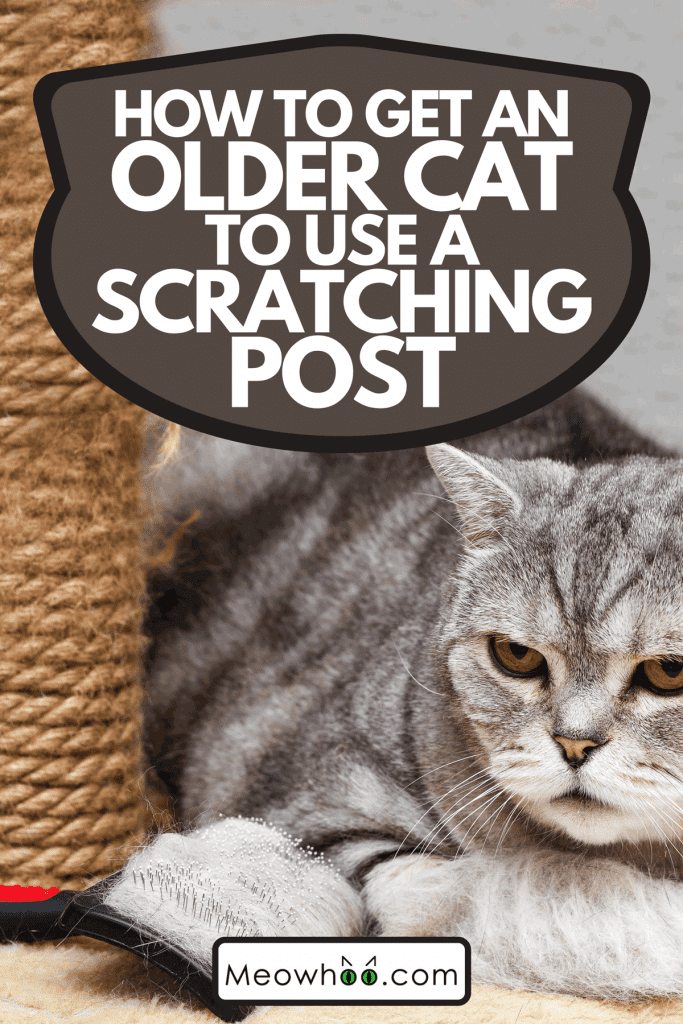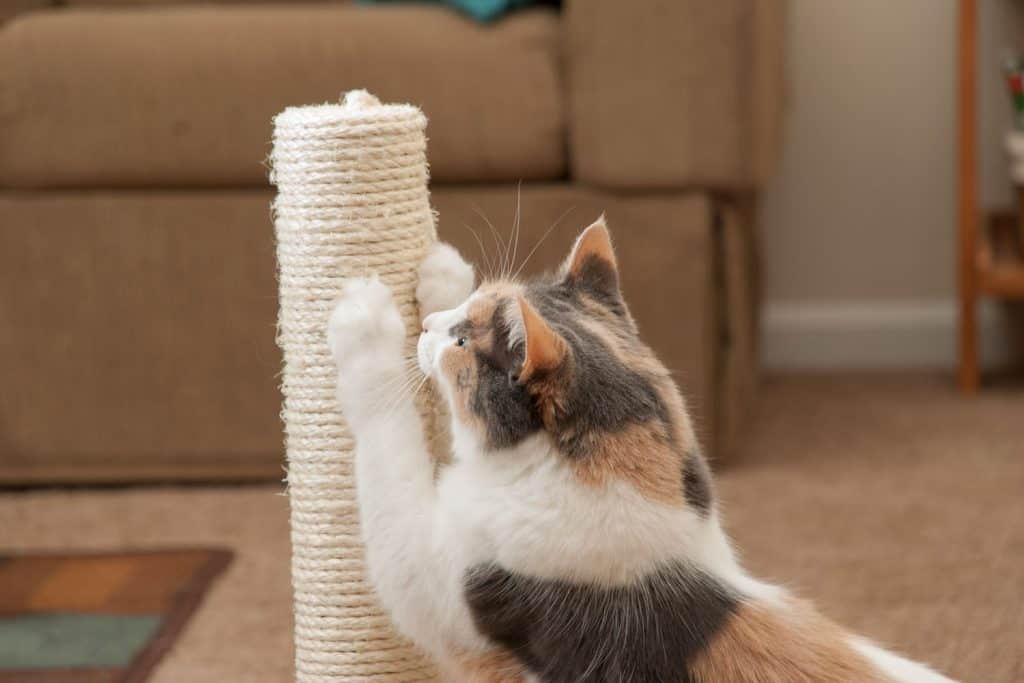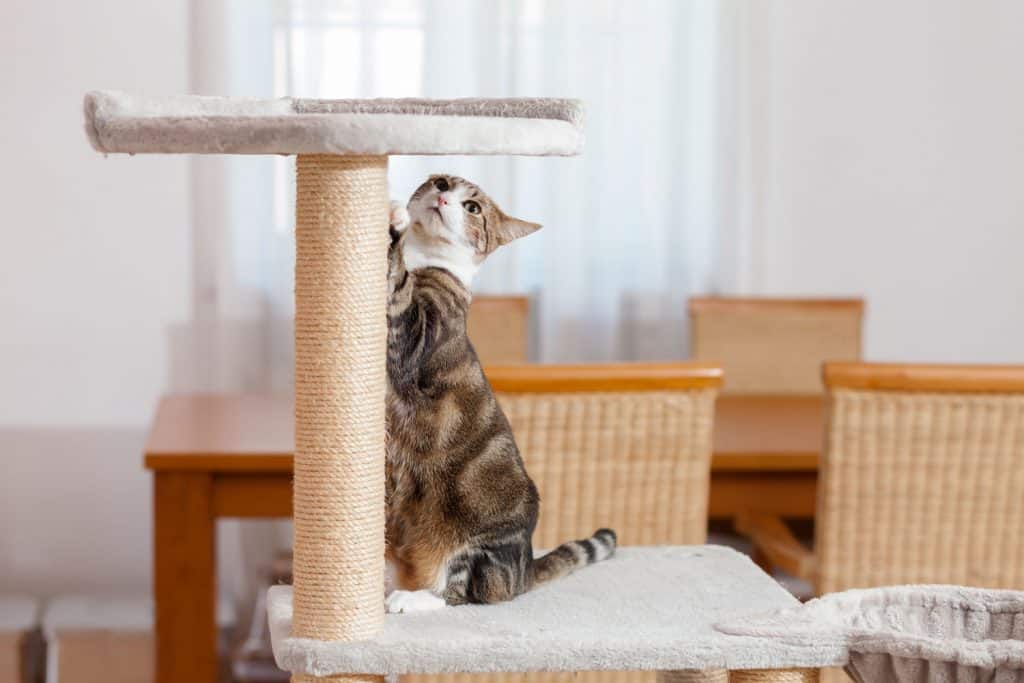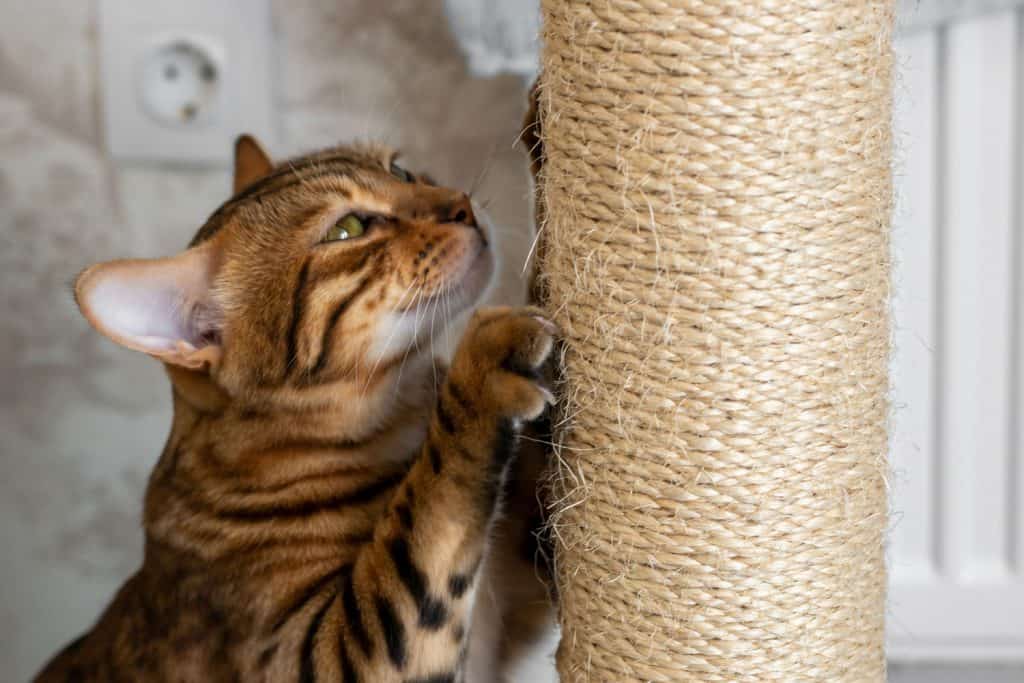Looking to save your furniture from the relentless scratching of your older cat? Curious to know if you can actually teach an older cat to use a scratching post. Well, you're in the right place!
In this article, we'll show you how to encourage an older cat to use a scratching post instead of your furniture. We'll also explore the psychology behind your cat's scratching behavior, how to choose the best scratching posts, and tips on training your cat effectively.
Stick around and let's claw our way to the answers!

Switching Up Scratching Habits: Training Your Senior Cat
Ever wondered if an older cat could still learn new habits? Specifically, can they be encouraged to trade your furniture for a proper scratching post?
Whether you're grappling with shredded carpet or a clawed-up couch, take heart - it's not too late! Cat experts weigh in, and their insights may surprise you.
Training your older cat to shift her scratching instincts from your furniture to a designated scratching post is completely achievable. And it's not just any scratching post - selecting one made from materials that cats naturally love to scratch is key. These posts should be tall and solid, designed to withstand a good clawing session.
Strategically positioning these posts within your home is essential. By placing them in your cat's favorite spots, you increase the likelihood of usage. The secret ingredient? Positive reinforcement!
Cats respond well to praise and rewards, making them ideal strategies for guiding your senior cat to favor these posts over your furniture. Remember, patience is your friend during this process - older cats may take a little more time to adjust.
Teaching Your Older Cat To Use A Scratching Post
Perhaps you've adopted an older cat and you want to teach her the basic rules inside your house. In particular, you want to train her not to scratch on your furniture. Don't worry because you can definitely teach her how to use a scratching post even at her age.
No cat is too old to learn anything new. But be prepared to spend a little bit more time training your senior cat. It takes a lot of practice and patience to get this done but with continuous positive reinforcement, you can have her scratching on those posts instead of your furniture in due time.
Can you train a cat not to scratch furniture?
Scratching is second nature to cats. It's part of their instinct. They scratch when they're excited and happy. They'll also scratch when they're anxious and stressed out. They engage in this behavior when they want to show their affection but they also do this when they're being aggressive.
All this scratching is normal until it begins to get destructive. Scratching can ruin not just your favorite furniture but also your carpet, draperies, walls, and other parts of the house that cats constantly scratch with their sharp nails.
The good news is that it doesn't have to come to this or you can put a stop to their destructive behavior. You can train a cat, regardless of age, not to scratch your furniture.
Step-by-Step Guide: Training Your Cat to Avoid Furniture
Here's how you do it:
Selecting the Right Tools: Scratching Posts and Interactive Toys
You need to buy scratching posts and interactive toys for your furry friend. The kind of scratching post that you buy is crucial. It should be tall, sturdy, strong, and covered with sisal or carpet fabric that cats love to scratch.
Strategic Placement of Scratching Posts
Place the scratching posts in strategic locations within your house. These are the areas where your pet loves to hang out and in front of furniture that she likes to scratch.
Introducing the Scratching Posts
Use interactive toys to introduce the scratching posts to your furball. Incorporate them in your playtime so that your pet would have a sensory experience of these posts.
Encouraging Proper Scratching Habits
When you've caught her interest in the scratching posts, encourage her behavior and give her treats to praise her behavior when she scratches on these items instead.
You can also sprinkle catnip on the scratching post or put some treats near the location to encourage your pet to use the post for scratching.
Making Your Furniture Less Appealing
Meanwhile, make your furniture temporarily undesirable to scratch. You can cover it with a tight-fitting sheet or put double-sided tape on its legs. Cats don't like to scratch on sticky and smooth surfaces. You can also use a citrus spray since cats have a natural aversion to this smell.
Intervening in Unwanted Scratching
When you catch her scratching your furniture again, make a loud noise to distract her.
Consistent Rewards and Patience in Training
Continue to praise and reward your cat for using the scratching post so that she can associate this behavior with something positive.
Be patient but firm when training your cat to use these posts. This applies to kittens and older cats alike. In time and with your proper guidance, your cat would know that your furniture is off-limits and it is more desirable to claw onto the scratching posts.

Do scratching posts really work for cats?
Scratching posts have been proven to work for felines who always have the urge to scratch. This cat-specific furniture is an acceptable alternative scratching material for our furry friends. The other option is the furniture in your home which we can all agree is inappropriate to scratch on.
Scratching posts give felines a proper outlet for their scratching behavior which comes so naturally for them. When you've trained your cat to use this product, you can save your home furniture from this potentially destructive behavior.
However, you have to choose your scratching post carefully so that it can be effective on your senior cat. It should be made of materials that your furry pet would love to scratch.
Scratching posts can be covered in sisal fabric, carpet material, or be made of corrugated cardboard. They should be stable and sturdy so that they won't wobble when used. These posts should also be tall enough to allow your older feline friend to stretch her entire body.
Most of all, the scratching posts need to be positioned in places that are easily accessible to your cat so that she can use them whenever she feels the urge to scratch.
Taking all of these factors into consideration would help make the use of these posts effective for your older feline pet.
Click this link to find this tall scratching post on Amazon.

Where is the best place to put a cat scratching post?
When training your cat to use a scratching post, location is everything. As mentioned earlier, you need to place these posts in strategic places in your home.
In particular, these places should meet the following criteria:
- Your cat loves to hang out in this area. It could be in the living room, by the window, or next to her sleeping area.
- It is near the furniture or other areas of the house that your pet loves to scratch. When she's tempted to scratch on the furniture, there's a more acceptable alternative right next to it.
- It is in a prominent area. Cats love to show off and mark their territory. They cannot do this when you tuck the scratching post in the basement or other unused portions of the house.
This means you have to invest in two or more posts but they'll be worth it because they'll keep your older cat away from your prized furniture. Make sure that the scratching posts are readily accessible to your pet so she can use them whenever she feels the need to scratch.

Will a scratching post dull a cat's nails?
Cats' nails aren't like our nails nor those of their canine brothers. For starters, they have retractable nails. This means that their claws can be hidden when they don't need them but they're ready for action when the need arises.
They need their claws or nails for hunting and climbing trees, just like their ancestors used to back when they lived in the wild. They also use their claws to protect themselves from larger predators. That's why they need to have sharp nails all the time.
Cats' nails are also tough and made of layers. They shed over time but their new nails will be as sharp as they need them to be.
A scratching post will not help dull your pet's nails. On the contrary, scratching on these posts will help them file their nails to shed the outer layer and expose a sharper nail underneath the old layer.
If you want to make your cat's nails duller, you can cut her nails using clippers specifically designed for cats. You can also ask your vet or cat groomer to do it for you if you're not comfortable cutting your pet's nails.
Check out this cat nail clipper on Amazon.
Maximizing Scratching Posts for Senior Cats
Invest in multiple scratching posts and place them in different areas of the house where your older cat loves to hang out. With the help of treats, a lot of praise, and more patience and understanding, you can guide your cat to use these posts for scratching as time goes by.
You may visit the following links to know more about cats and their scratching posts:
Does A Scratching Post Dull A Cat’s Nails?
How Often Do Cats Use The Scratching Post?
Some elements on this page may have been created by our team using advanced AI to provide you with top-notch cat inspired ideas. Read more about our AI Content Policy.


